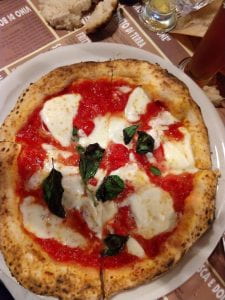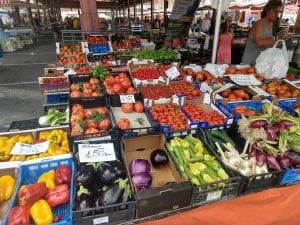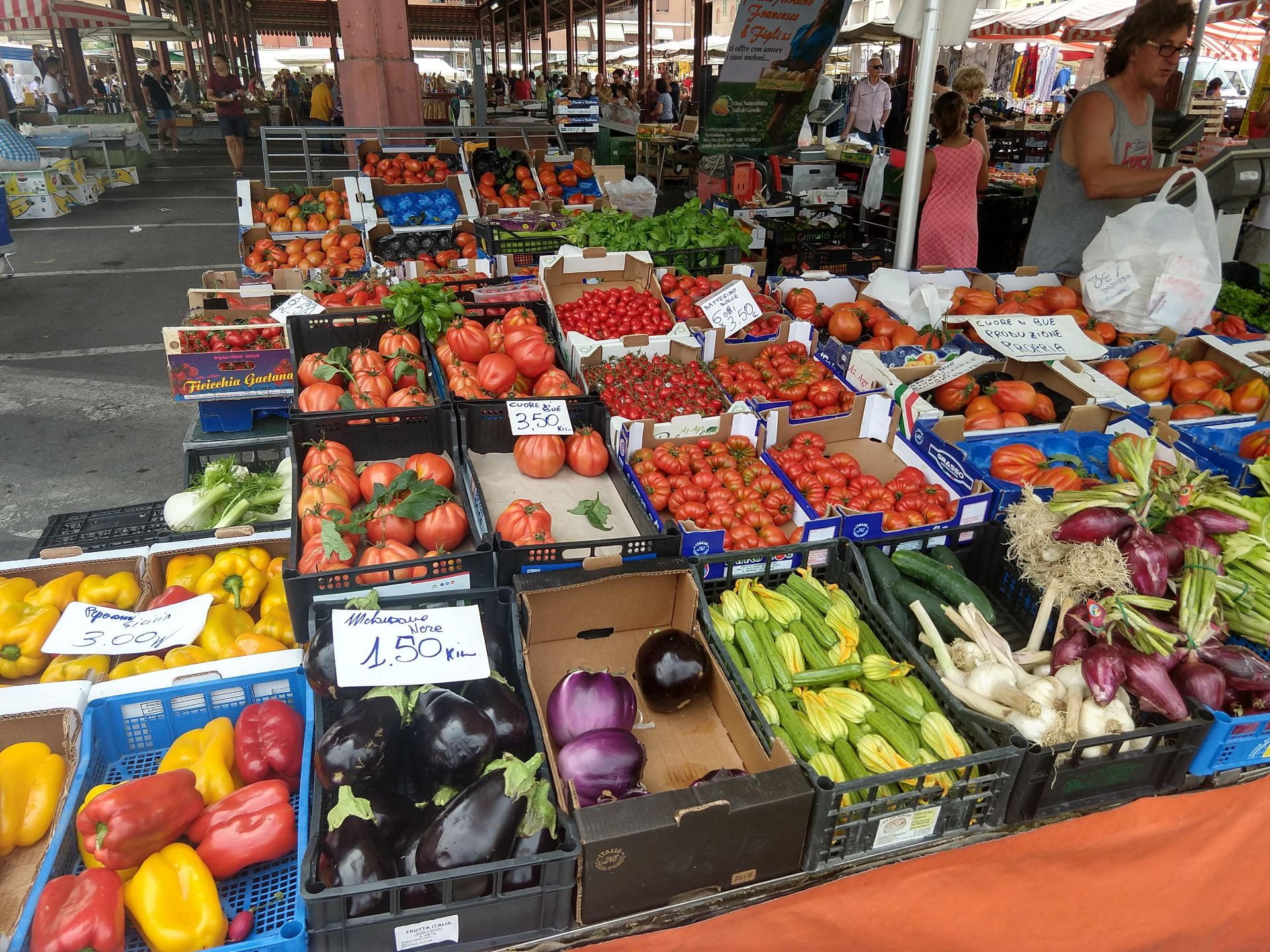I wrote this piece for the new website of the Office of Campus Sustainability.
Tomato tales
I have a vivid memory of being on a slow regional train, adventuring north from Siena while studying abroad in Italy. Two Italian grandmothers in the same compartment struck up a conversation with me. I was proud to chat with them in my improving Italian, and they were curious about life in my home state of Texas. “But where do you get tomatoes for your sauce?” one asked with genuine concern.
I remember giggling to myself, because I knew that tomatoes were a New World food, brought back to Italy in the sixteenth century along with peppers, corn, potatoes, and other foods at the base of pasta all’arrabbiata, polenta, and gnocchi, to name just a few staples of Italian cuisine. Nevertheless, Italian tomatoes have a sort of cult status, and tomatoes bearing the “made in Italy” brand sell for a premium in supermarkets across the globe. It fascinated me back then, as it does today, that something celebrated as a source of national-cultural culinary pride might actually be an ecological import, a migrant, a traveler.
How many stories converge around tomatoes? They are countless, and they are stories I have been examining in greater depth in an article I co-wrote with my colleague Giovanna Faleschini-Lerner. Tomato tales are stories of migration – of a plant, of a culture, and of the laborers who today travel thousands of miles to harvest them, often in deplorable conditions. They are global stories of colonialism, of massive agribusiness, and of the complex supply chains that govern our foodways. Tomatoes are custodians of local tales about beloved heirloom varietals and ‘terroir,’ the unique signature of soil and the climate that you can discern in food and wine. For my Italian American students, the fruits evoke vivid memories of health and wellbeing, moments when multi-generational families gather to preserve and prepare nourishing meals. But tomatoes can also be bearers of toxic tales, as many commercial tomato farms rely on toxic chemical cocktails to suppress weeds, pests, and diseases—chemicals that affect the bodies of farm laborers and, later, the people who consume the fruits.
Tomatoes and sustainability
So what, exactly, does this have to do with sustainability? Tomatoes are a delectable reminder of both how complex the notion of environmental sustainability is, and how vital. In one, fragile fruit, you can trace the ways that questions of sustainability are enmeshed in questions that are both local and global. You can see that sustainability is not only about humans, and that nature is not just “out there”: humans are enfolded in networks where relations to nonhuman others are vital to existence. You can see that sustainability requires attention to health, equity, and justice. You can understand the tug of the present, a present that you feel in hunger, pleasure, ripeness, conviviality at the table. And you can imagine how these immediate needs sometimes conflict with long-term planning for the future, a future that might require investment, planning, and major structural change.
of both how complex the notion of environmental sustainability is, and how vital. In one, fragile fruit, you can trace the ways that questions of sustainability are enmeshed in questions that are both local and global. You can see that sustainability is not only about humans, and that nature is not just “out there”: humans are enfolded in networks where relations to nonhuman others are vital to existence. You can see that sustainability requires attention to health, equity, and justice. You can understand the tug of the present, a present that you feel in hunger, pleasure, ripeness, conviviality at the table. And you can imagine how these immediate needs sometimes conflict with long-term planning for the future, a future that might require investment, planning, and major structural change.
As the current Chair of Wayne State’s President’s Standing Committee on Environmental Initiatives, I am working with Daryl Pierson and the Office of Campus Sustainability and a group of inspiring student interns to shape and support the university’s Sustainability Strategic Plan. A university like Wayne State is a generative place to shape ideas about sustainability, because our research and teaching crisscrosses the global and the local, bringing together arts, humanities, business, law, medicine, and science. Our university is a garden, cultivating ideas and planting seeds of change. We are a mini-city in the middle of Detroit, and as such, we have the responsibility to be stewards of the environment that we inhabit, and of which we are a part. The Sustainability Strategic Plan recognizes how the interplay between the economic, the social, and the environmental affect daily life and the long-term future. COVID-19 has heightened our awareness of these critical intersections—but they’re visible everywhere if you look for them, even in a tomato.
Not everyone likes the term “sustainability,” which is used broadly in all kinds of contexts, and doesn’t always refer to efforts to protect the environment. As an Italianist and an environmental humanist, I love etymologies, and I appreciate that to “sustain” is to hold (tenere) from below (sub). There is a material care at work here, an attention to sustenance and to support. Sustainability can definitely be a buzzword, but it can also be an umbrella term that holds up ideas of equity, environmental justice, health, and hope.

What does a sustainable future for Wayne State look like? As we work to frame the next Sustainability Strategic Plan, we hope that you’ll join the conversation on how to shape it. Get involved by joining our network of scholars, students, employees and community partners. Check out the United Nations Sustainable Development Goals and consider the things we need to prioritize. Mark your calendars for Green Street, our annual celebration of Sustainability in Higher Education Month. Shop at the Wayne State Farmers Market, and think critically about how each tomato, each collard green, each blueberry bears a distinctive signature, and how when you consume it, its story becomes your story, too.

